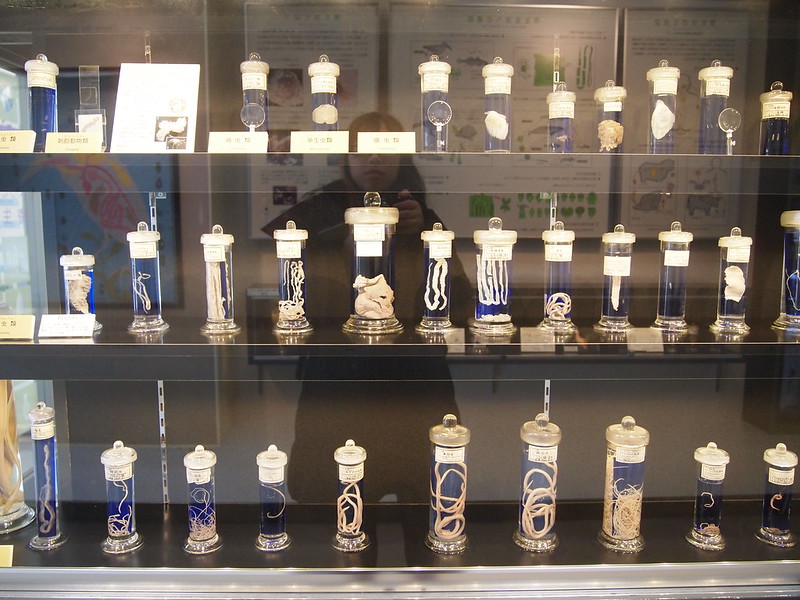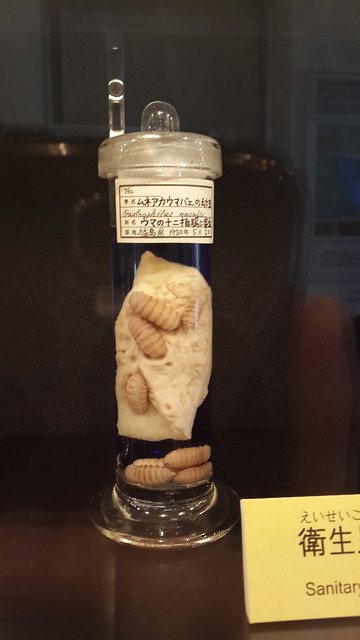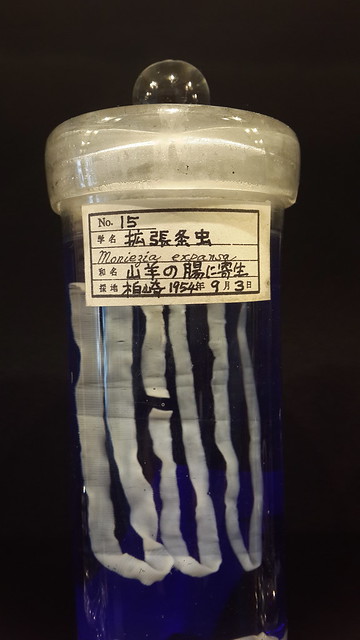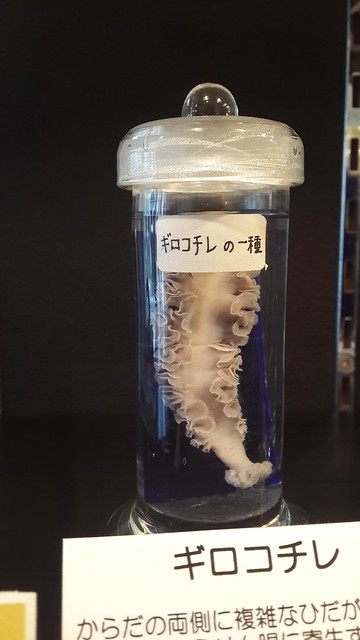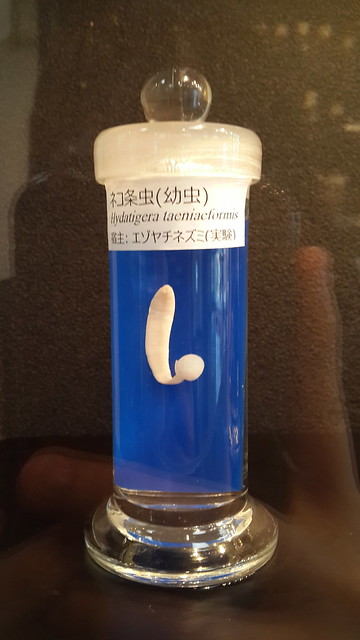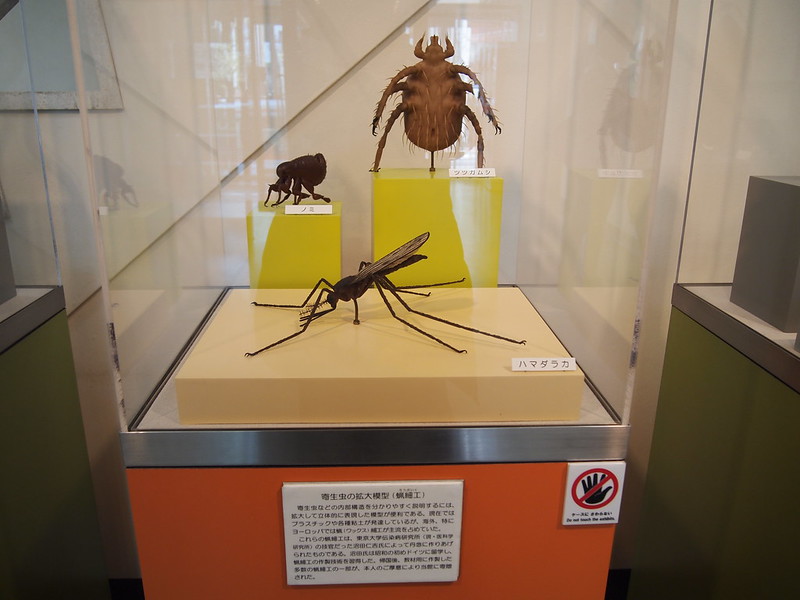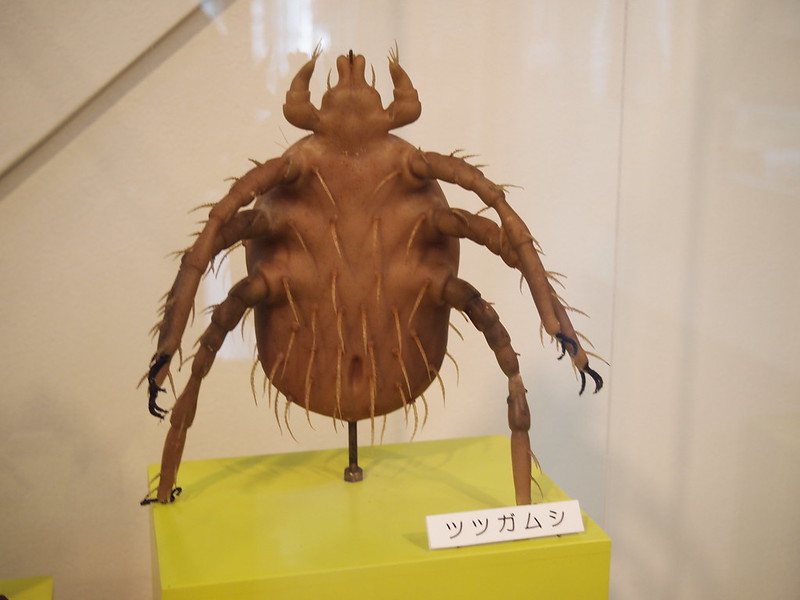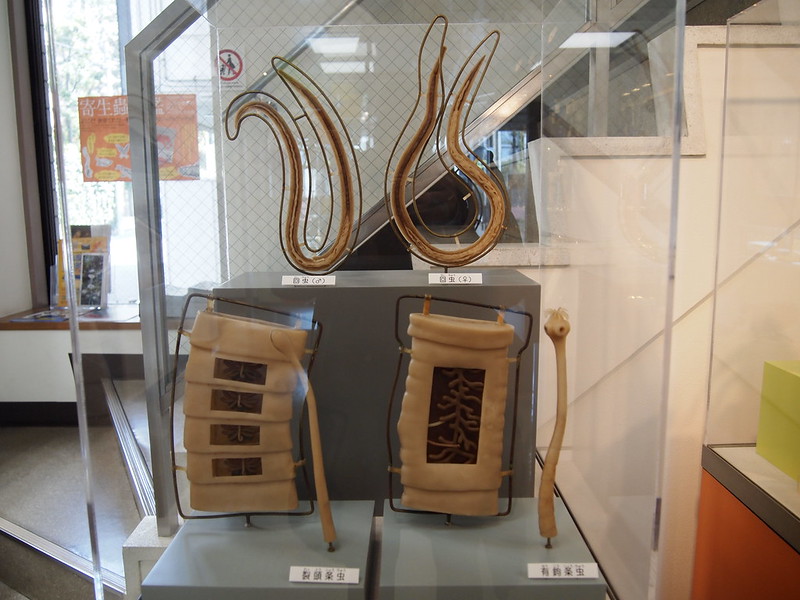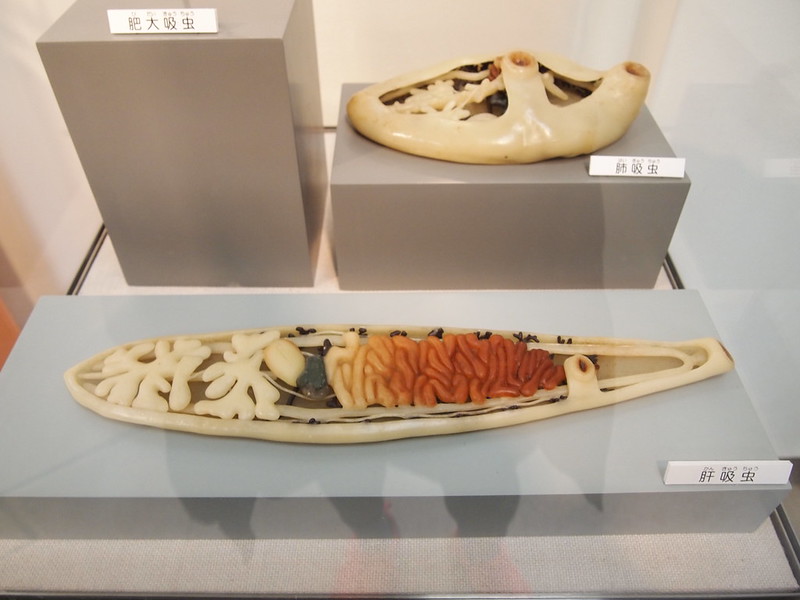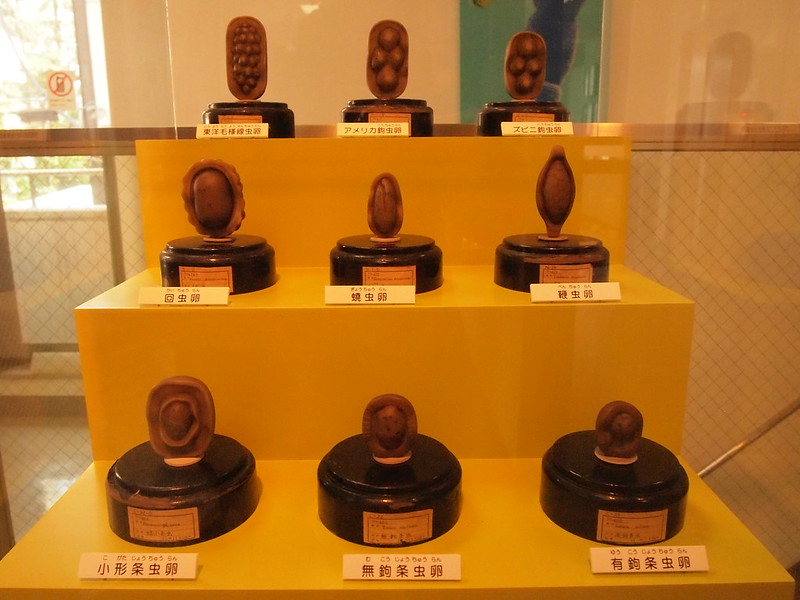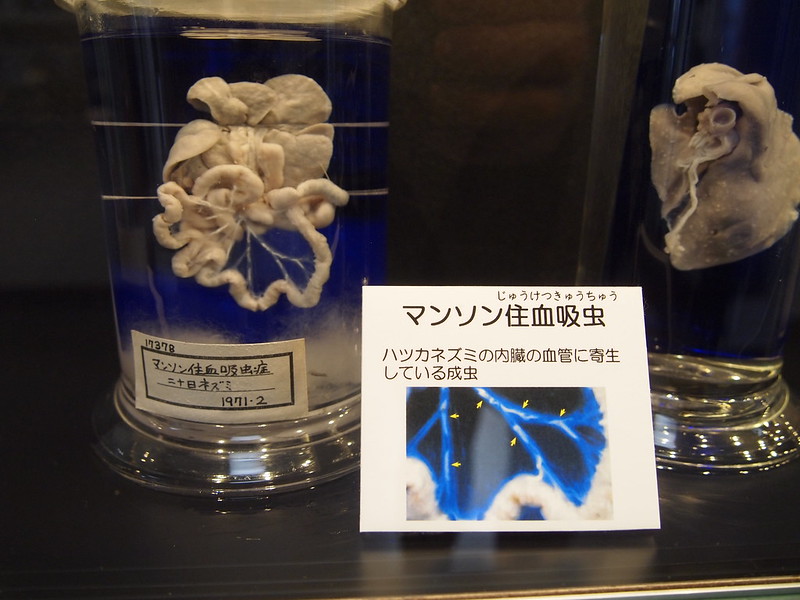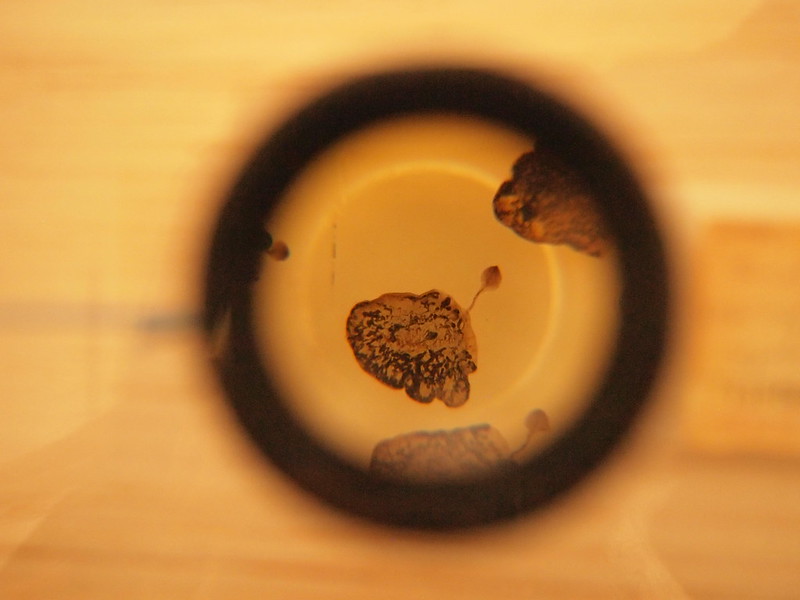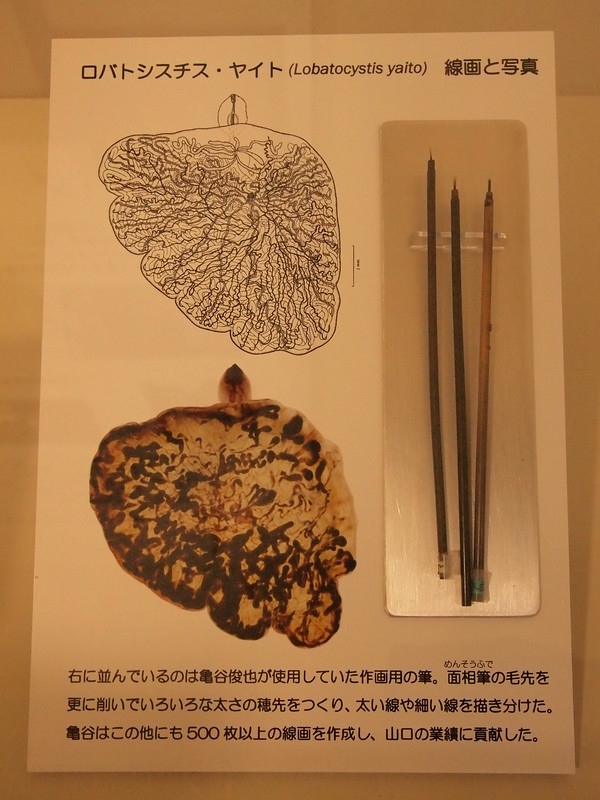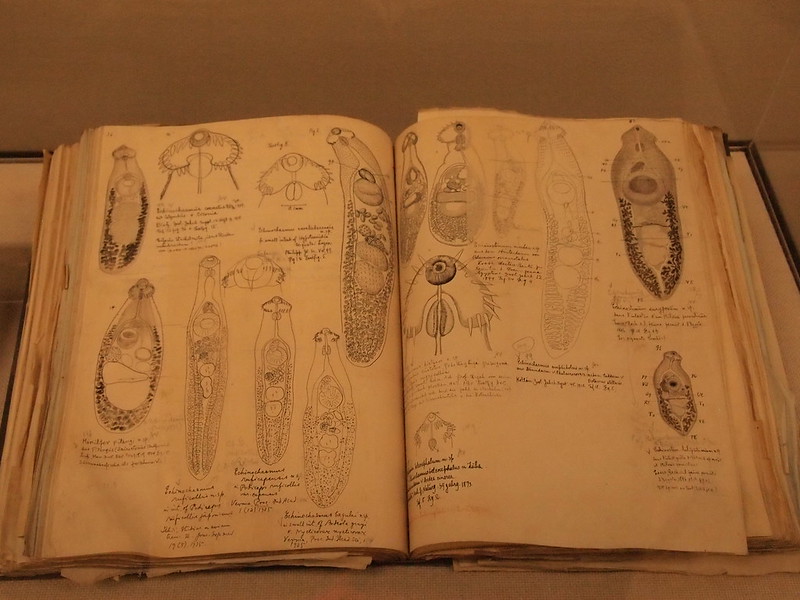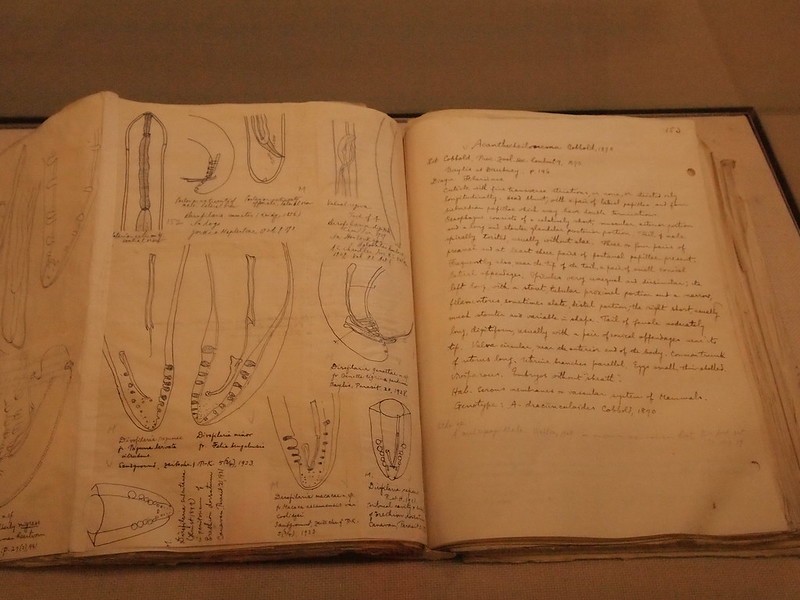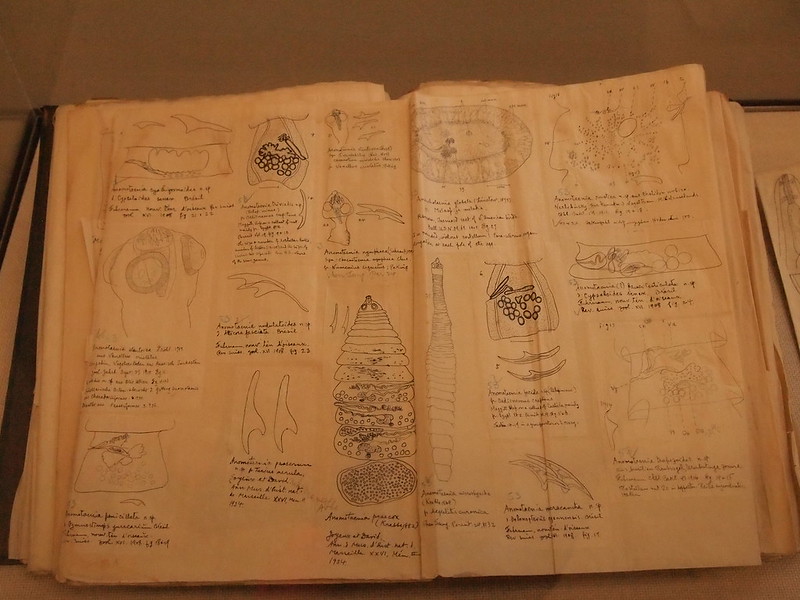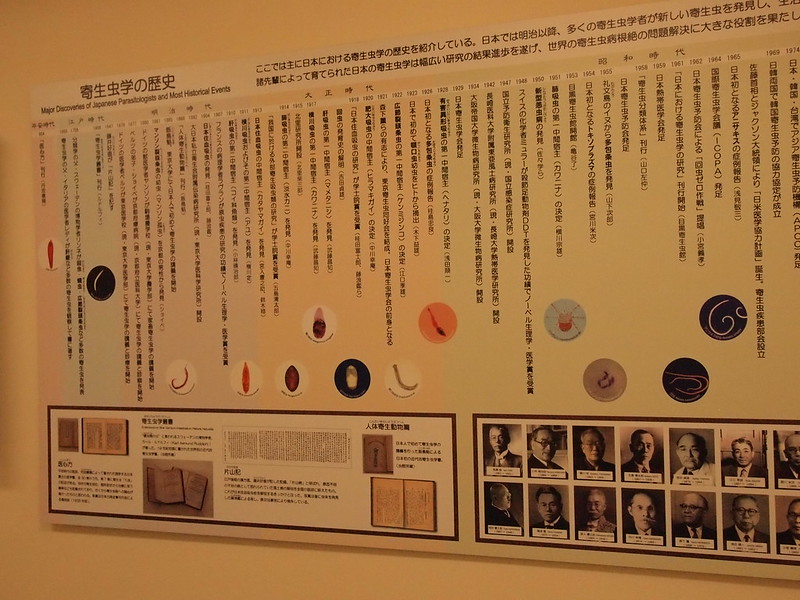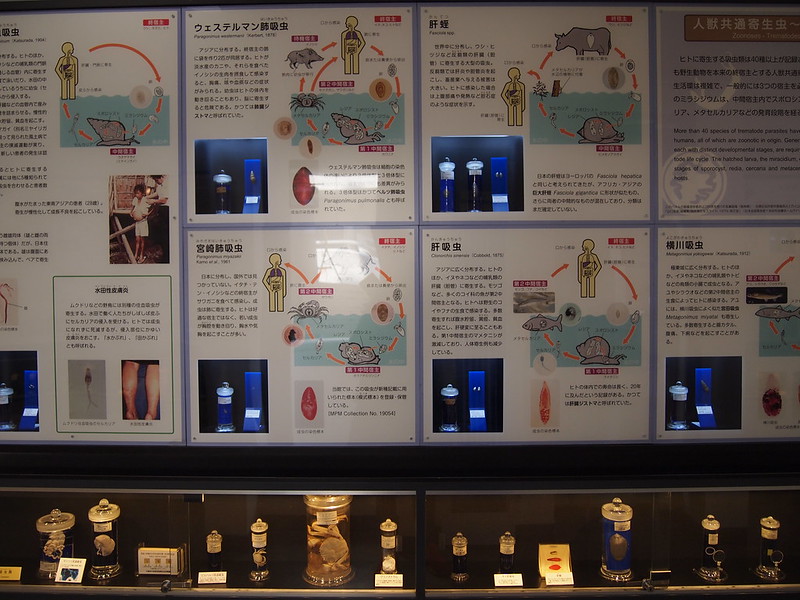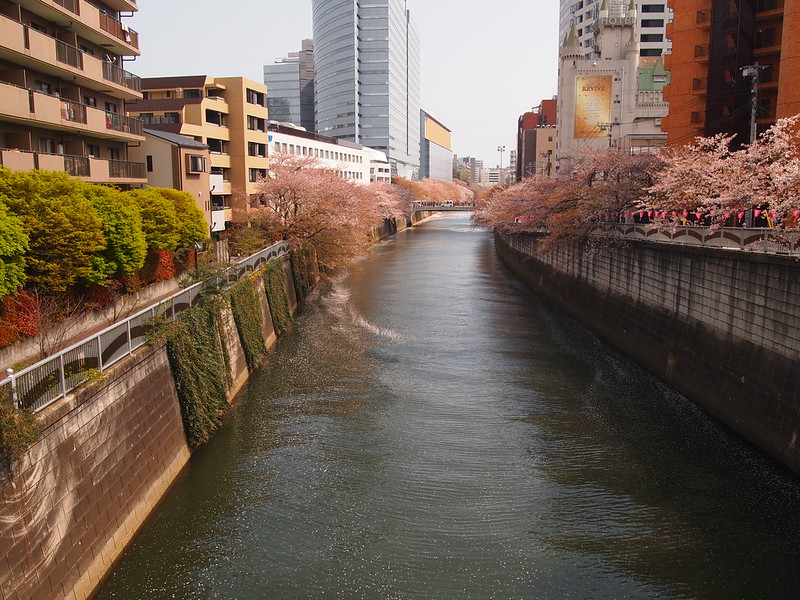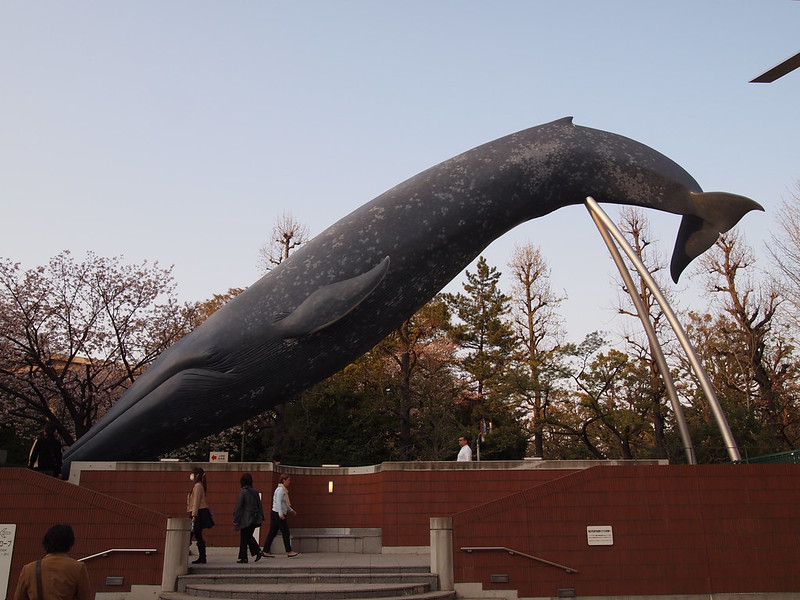
There are a number of museums and attractions in the vicinity of Ueno Park, but out of all the things I saw there, the most impressive place that I visited in this area had to be the
National Museum of Nature and Science, Japan's main natural history museum. You will recognise it from the giant whale in front of the building.
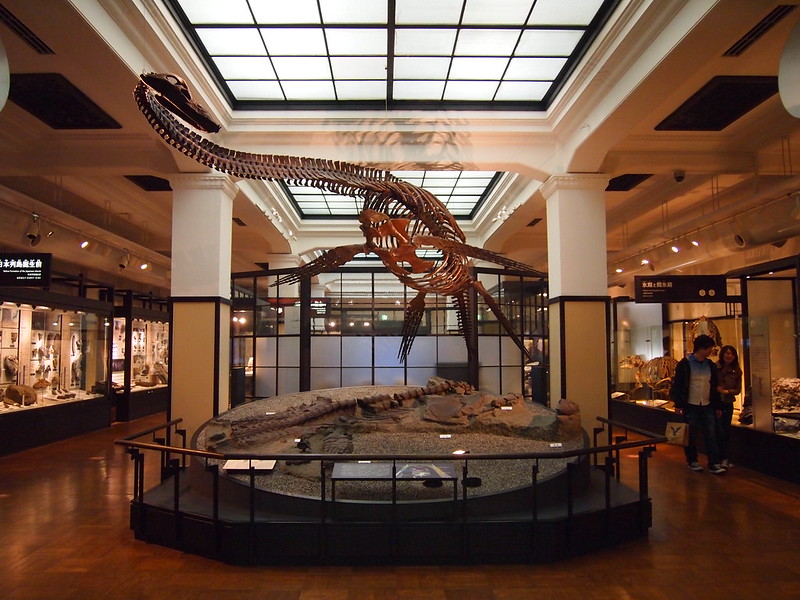
First opened in 1871, the museum has apparently held several other names in the past, including Ministry of Education Museum, Tokyo Museum, Tokyo Science Museum, and the National Science Museum of Japan. Since a spate of renovations and redesigning of its halls in the 2000s, it is now known as the "National Museum of Nature and Science". I feel that its original pedagogic aspirations are also well evident from its permanent exhibition design.
Out of all the natural history museums I have seen so far in various countries and cities, this is probably one of the best and most uniquely designed. No space is wasted in this place; this is not going to be one of those wide and empty museums; no, every inch of the wall here is covered in tiny descriptions and wall-mounted specimens. I was surprised at first at their choice to make their permanent collection display so dense, but in the end I really liked it because despite the density, a lot of thought (and design) had clearly gone into it - laser cut map outlines, strange box display designs, and a plethora of images.

The quality of the scientific models was very impressive and the displays were so lush - so rich, detailed and finely textured! No shonky taxidermy (unlike a lot of other natural history museums I've seen in other cities) - everything here is highly professional, all thoughtfully and sensitively produced.
What is even more impressive is when one finds out that the forerunner of this museum was completely destroyed by fire during the Great Kanto Earthquake of 1923 - all of its exhibits and specimens were destroyed and extensive attempts had to be made to reconstruct it.
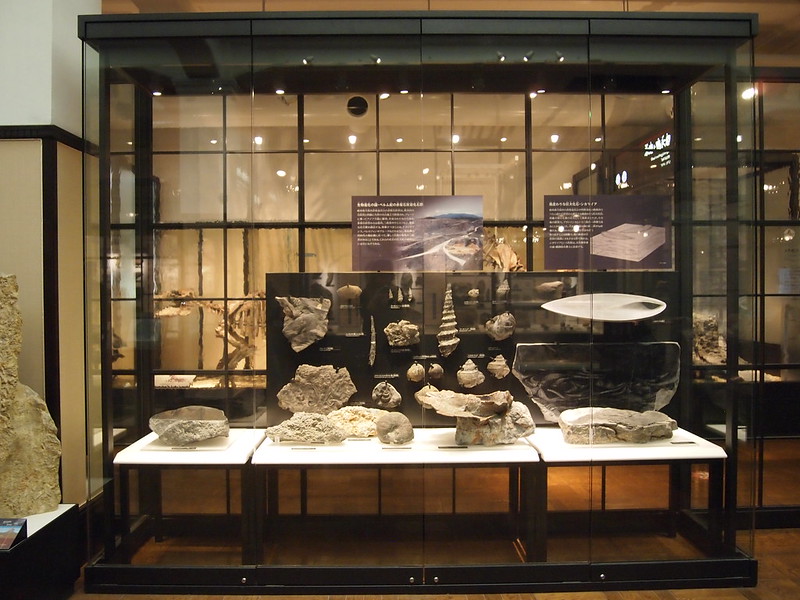
I particularly liked the "window" design to a lot of the display casings in this museum - they have a very distinctive look and initially I thought of them as lines on a graph or a grid; which would then be perfectly evocative of the history of taxonomy it was trying to illustrate here.
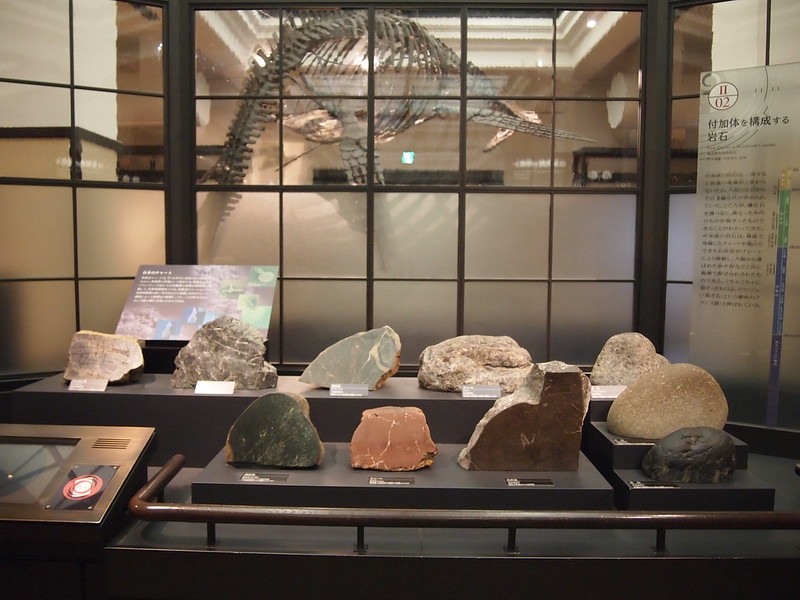
As I thought more about why they had this appearance, I realised that they were supposed to be like "shoji" screens - those room dividers in which bamboo lattice frames hold translucent papers to divide up a space - a feature commonly seen in Japanese architecture. These however, were made to be more solid and had glass or translucent frosted glass instead of paper. If you look through more images of the museum you will see that a lot of the background panelling of this museum was designed to have a "shoji screen" appearance, including the (ambient) ceiling lights themselves! Display items have their own spotlight, but the overall design of the space is that of a room with many shoji screens and light gently coming to the space.
And a history of life on earth? Not only can they write the literature about it, but they actually have the vast specimen collection to serve as the empirical evidence of this history. The collection includes a general collection and also a more focused collection of specimens from the Japanese archipelago - these collections are part of Japan's National Collections; the museum is "nationally administered" and there appears to be a lot of emphasis on sharing this information with the public.

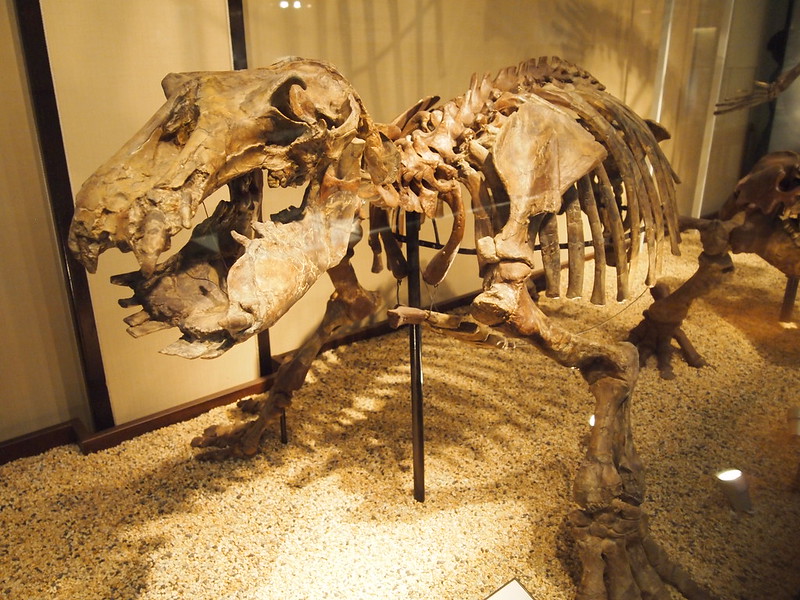
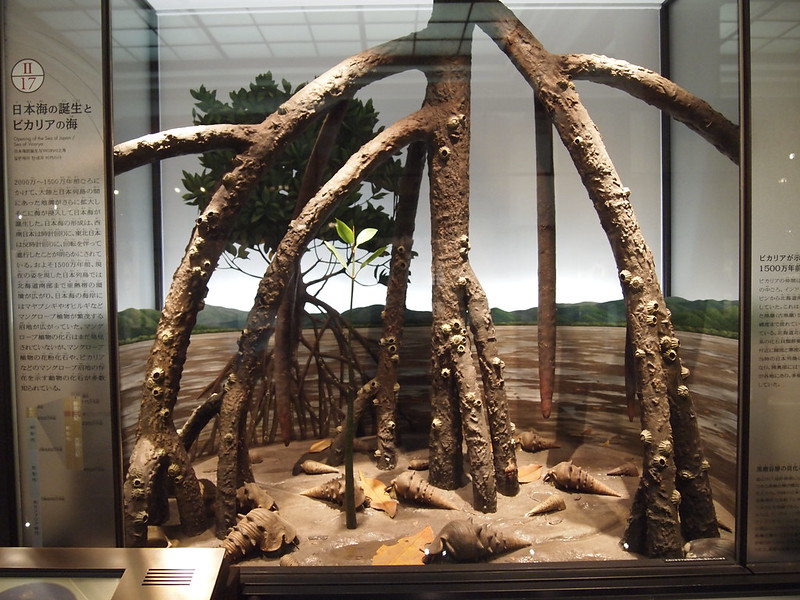

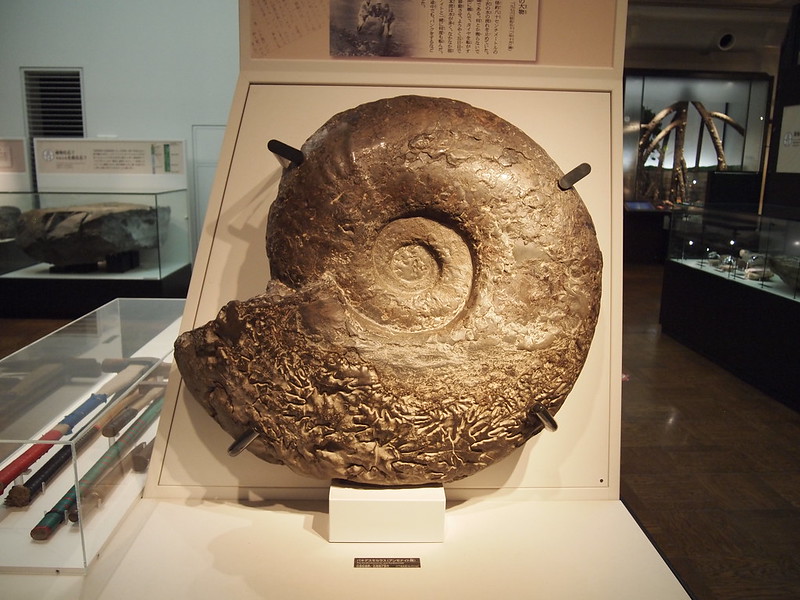
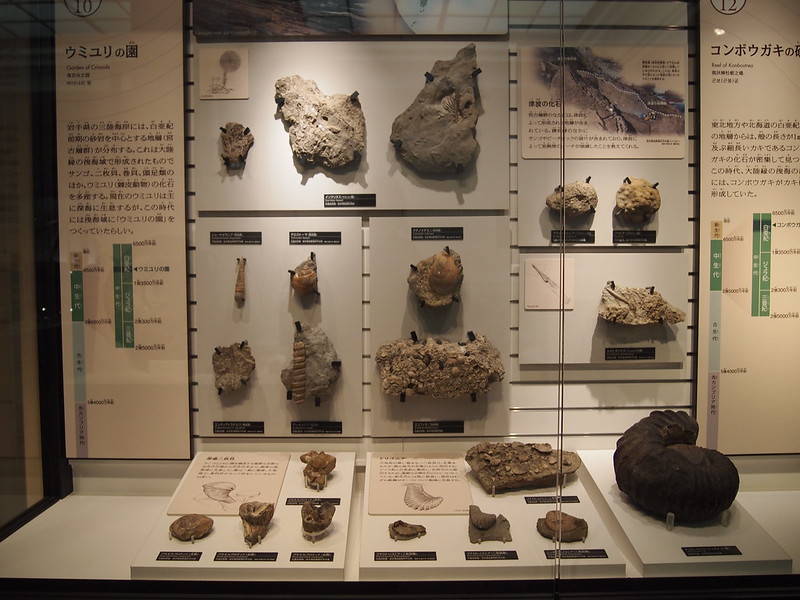
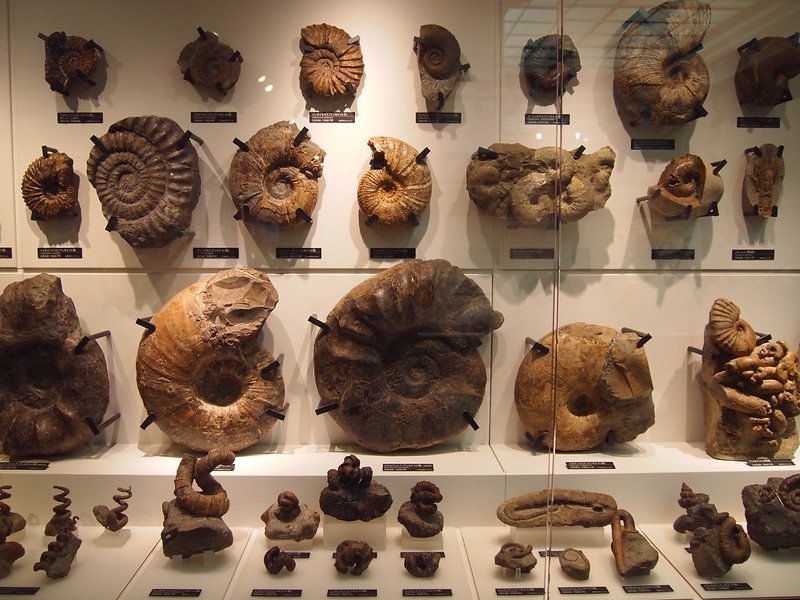
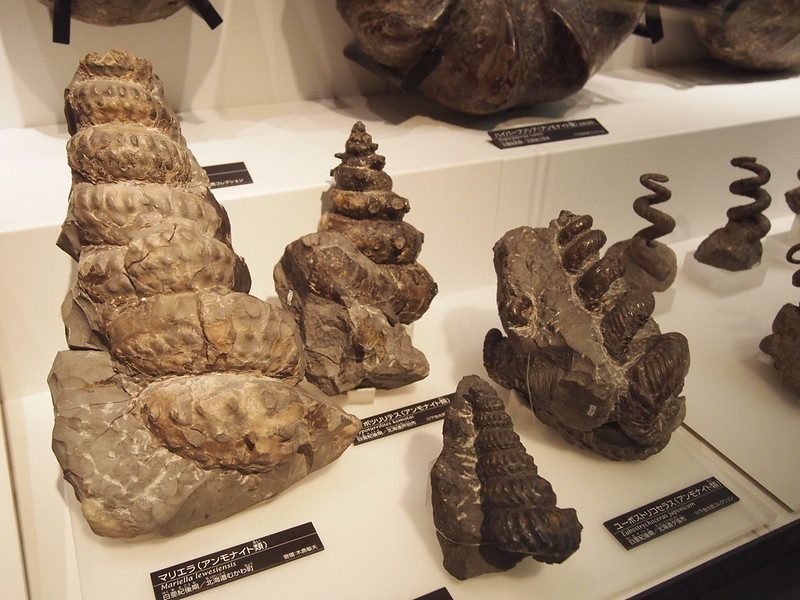
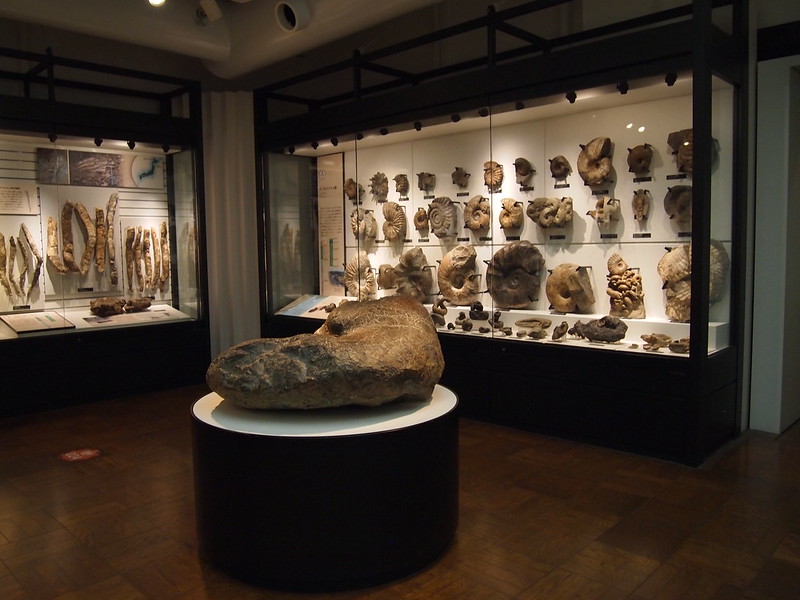
The Museum also takes in postdoc researchers from certain universities and provides professional training for researchers in taxonomy and other branches of natural history. They have departments for Zoology (Vertebrates, Marine Invertebrates, Terrestrial Invertebrates), Botany (Land Plants, Fungi and Algae, Plant Diversity and Conservation), Geology and Paleontology (Mineral Sciences, Biotic Evolution, Paleoenvironment and Paleoecology), Anthropology (Human Evolution), Science and Engineering (History of Science and Technology, Physical Sciences, Artifact Research). They also run the Tsukuba Botanical Garden, Institute for Nature Study (urban ecology research), Center for Molecular Biodiversity Research, Showa Memorial Institute, and Center of the History of Japanese Industrial Technology. Like the Miraikan (another very impressive museum in Tokyo which I will write about later), this is a living museum with an active research centre attached to it.
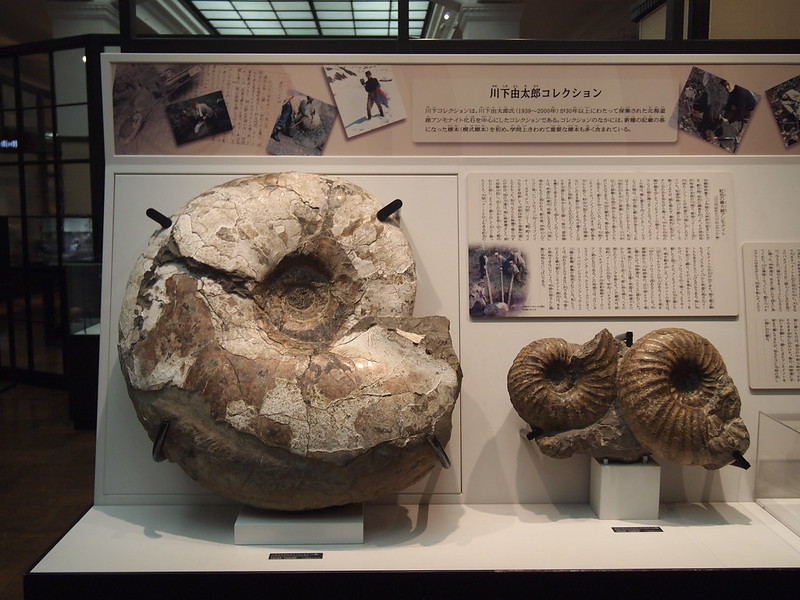
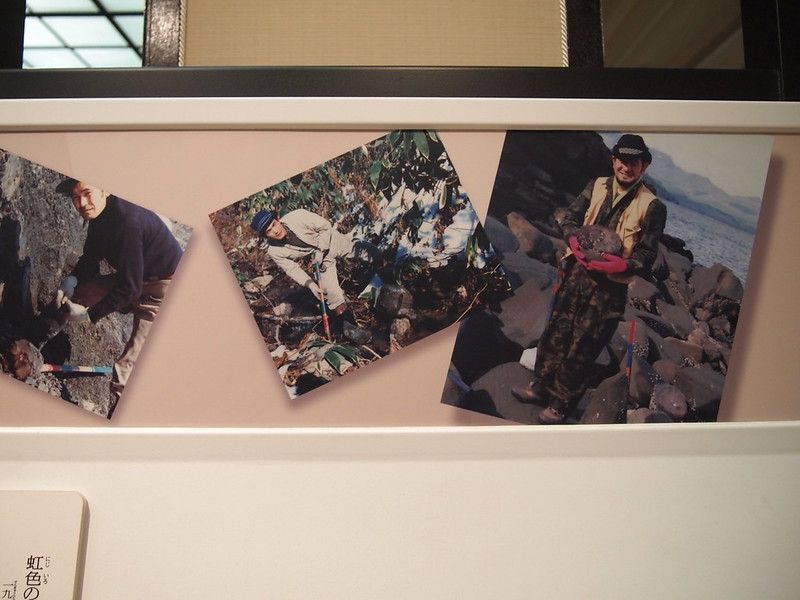
A number of displays were replete with the images of the individuals who had recovered and handled the specimens. Unable to read the japanese labels, I still had the impression that the image it wanted to portrayed of the field of archaeology in Japan was that it was an area of study that was very much alive, with individuals today still actively contribute to it greatly through their hard work and discoveries.
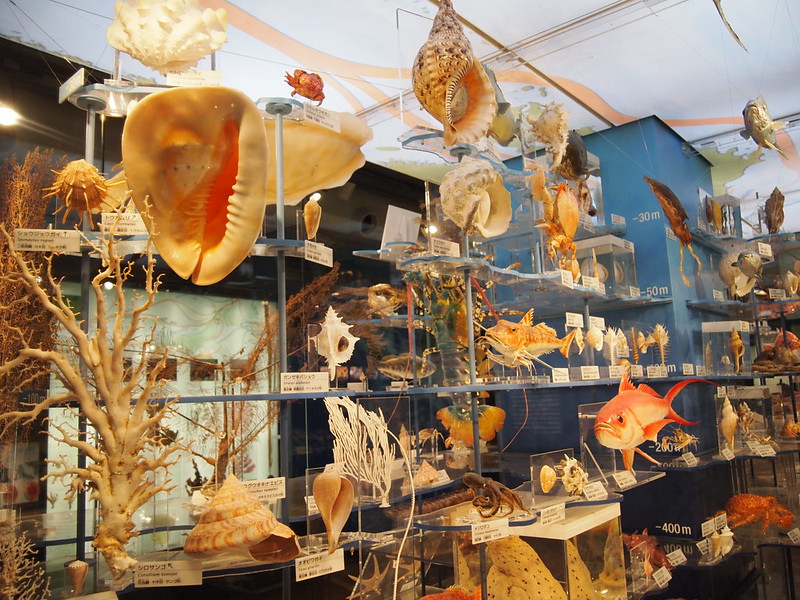
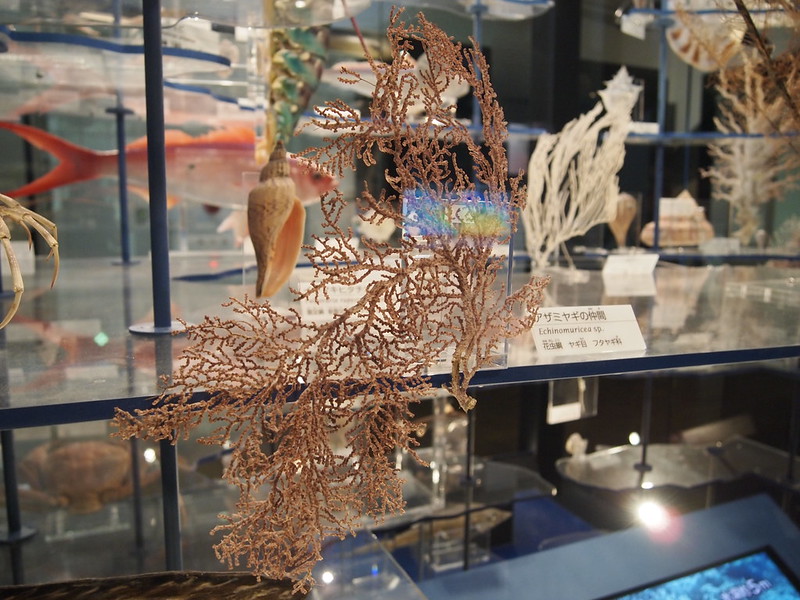
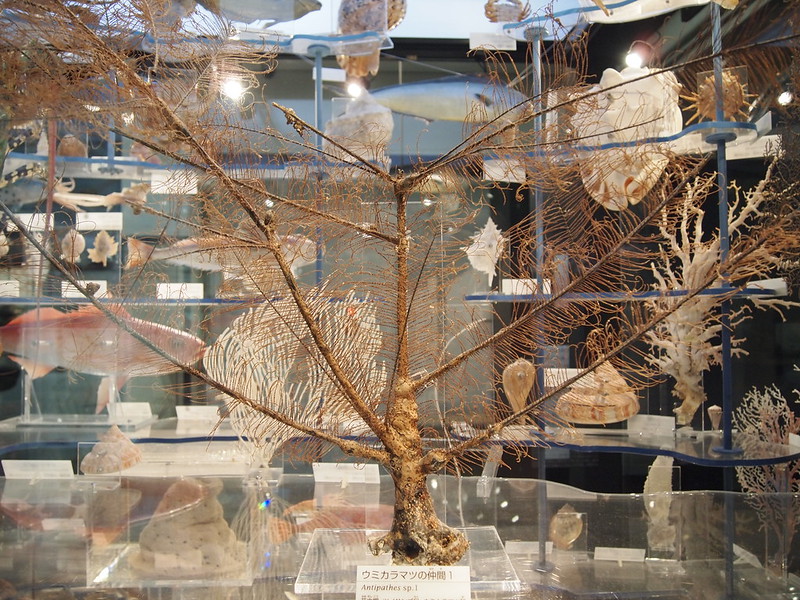
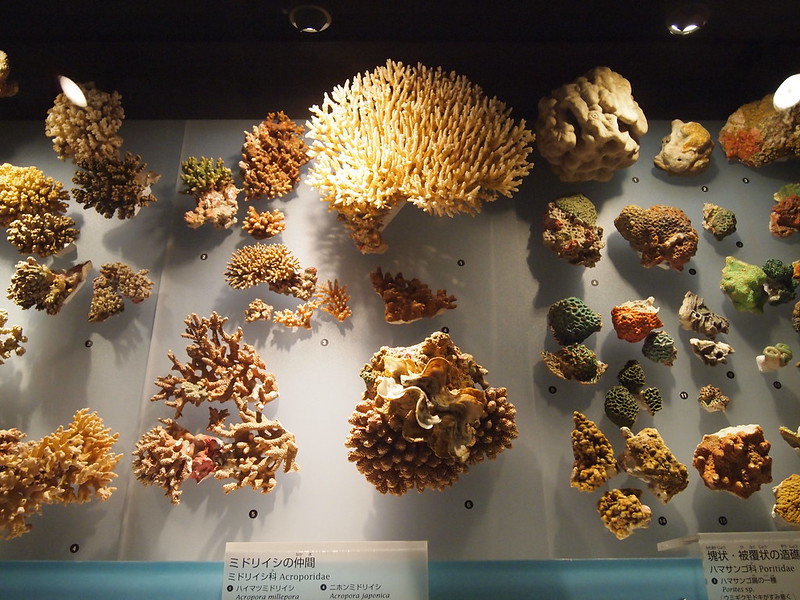
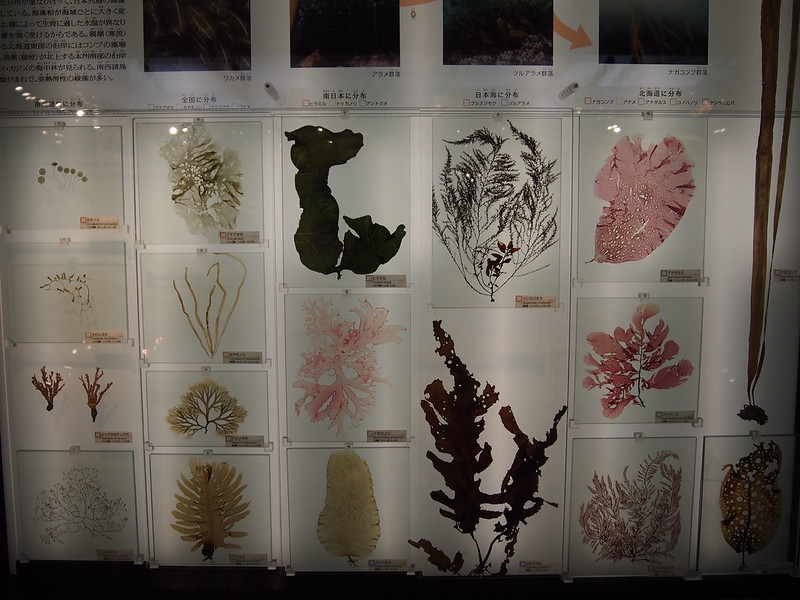
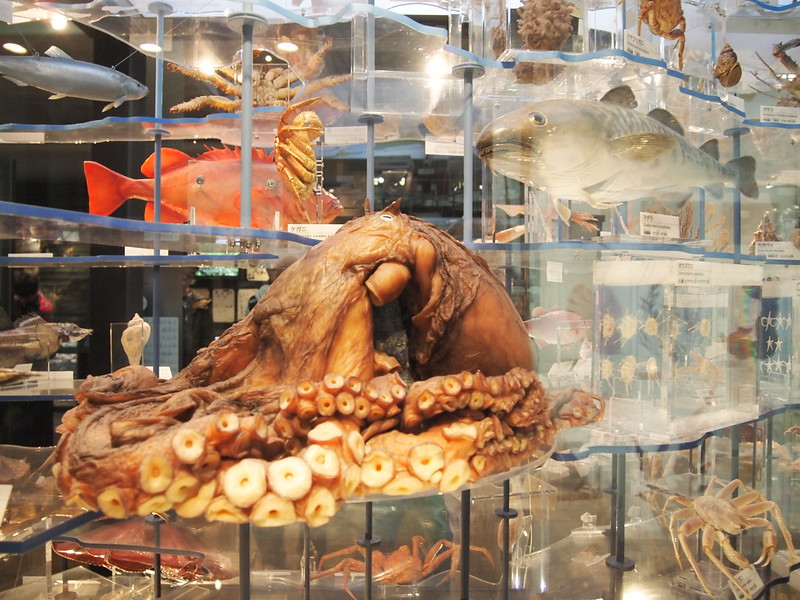
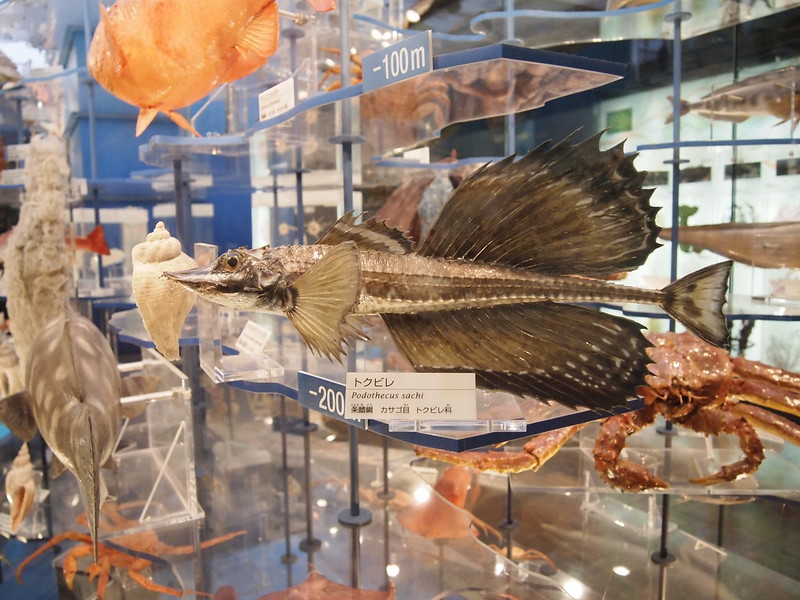


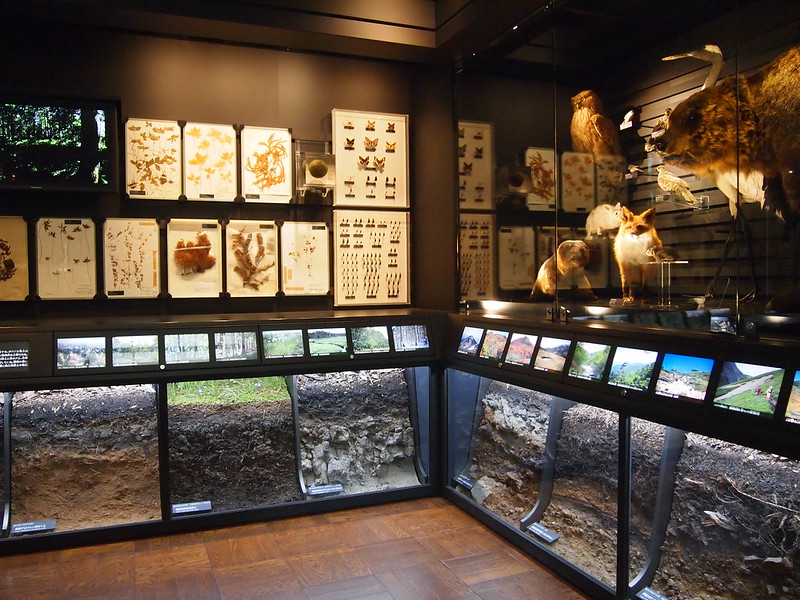
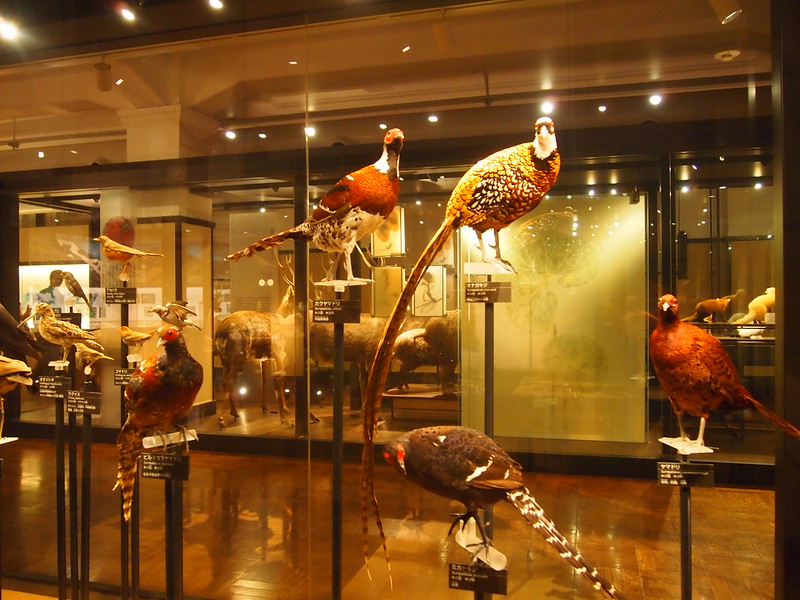
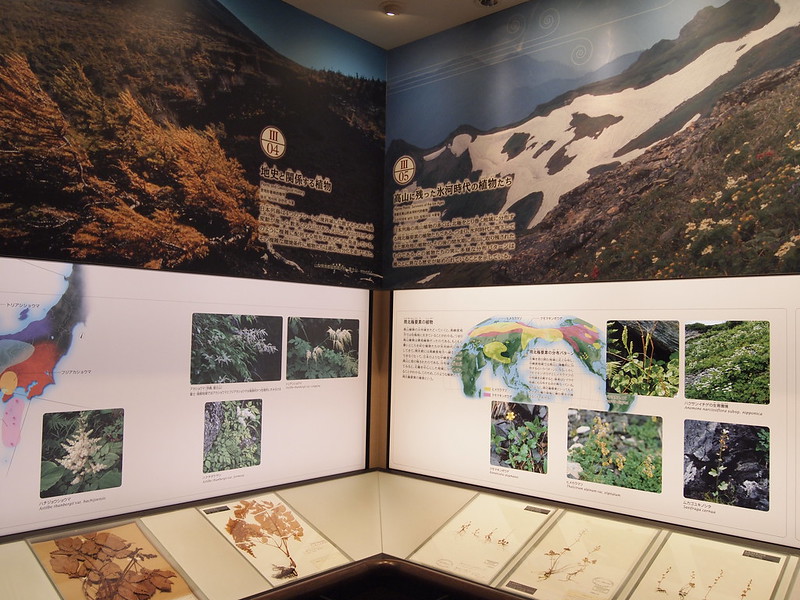
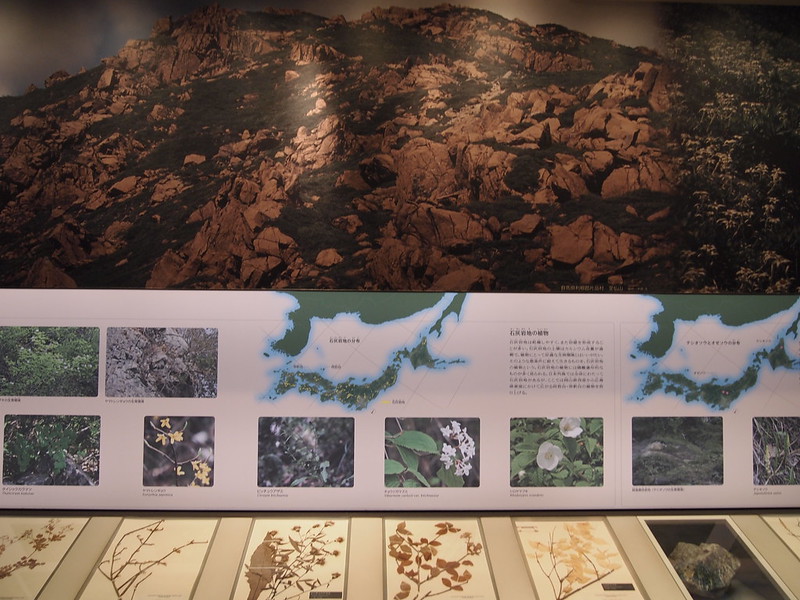
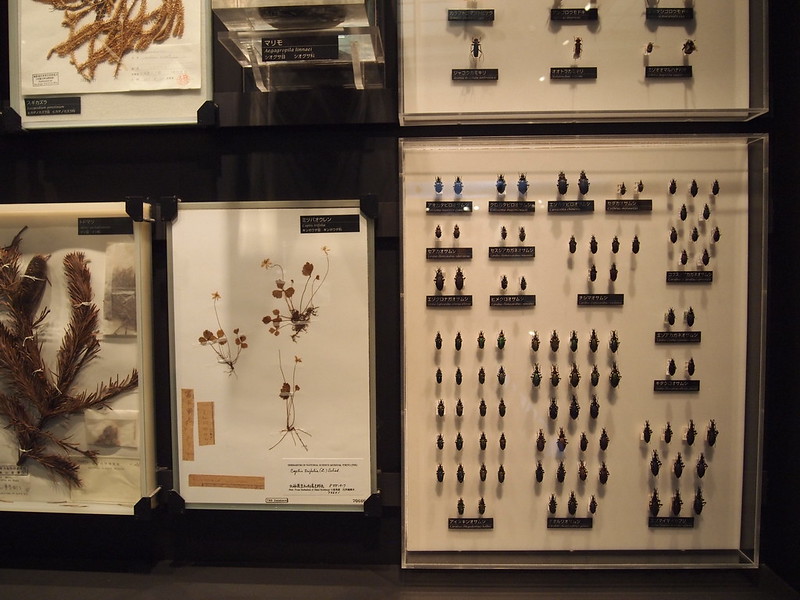
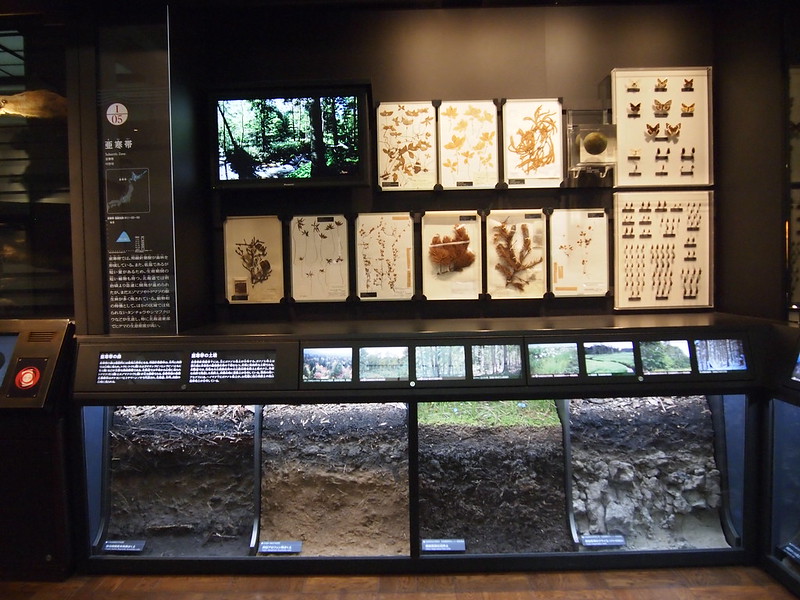
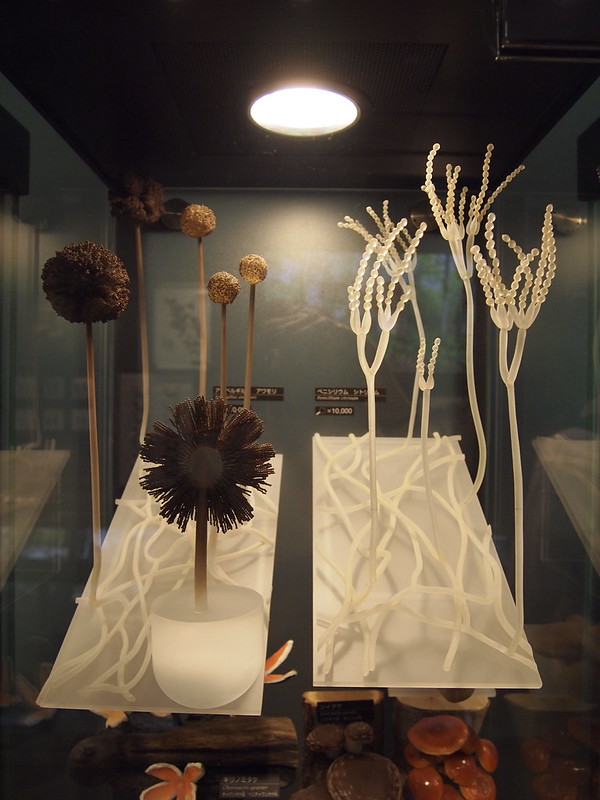
Scientific Models of Fungi
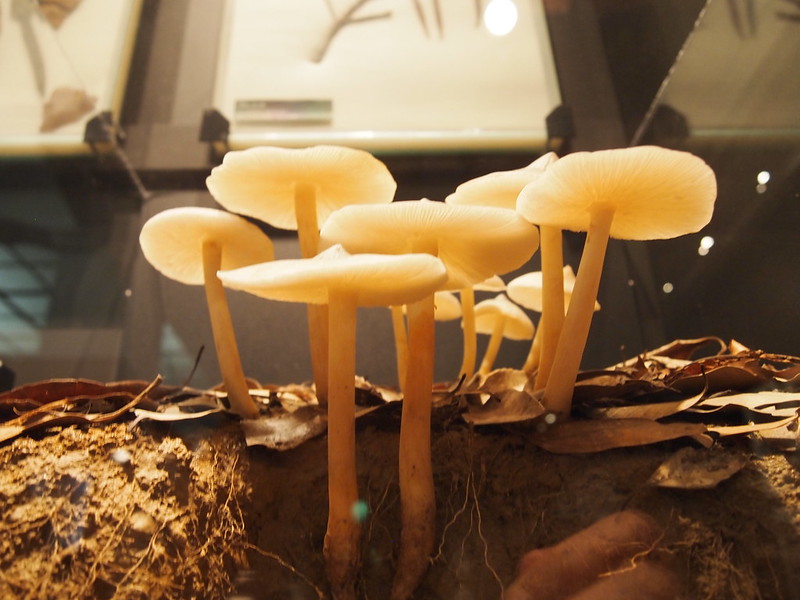
Can you believe this is just a scientific model? First class modeling work.
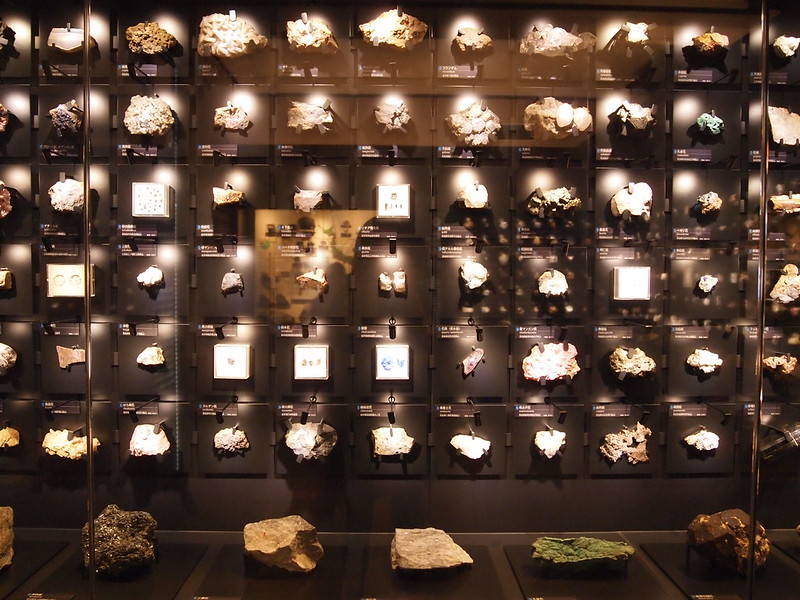
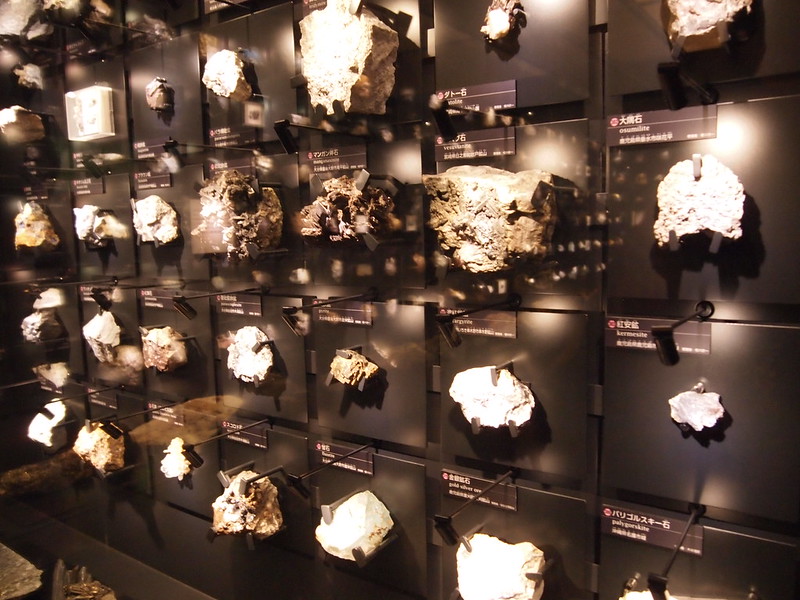
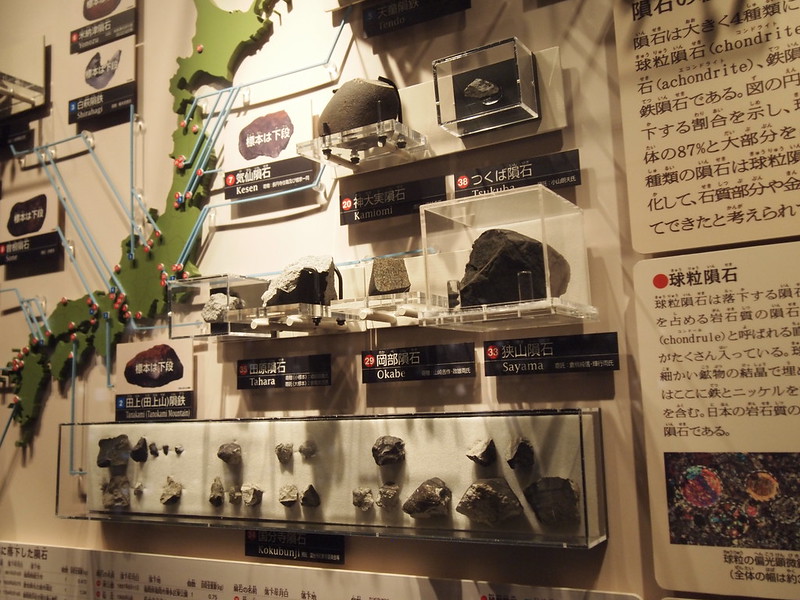
Laser cut labels and map
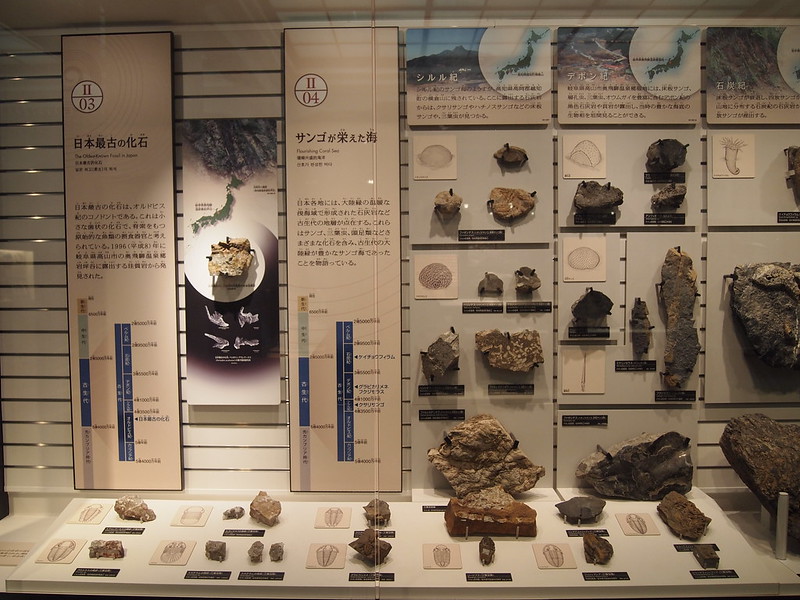
Wall of Scientific Illustrations and Specimens
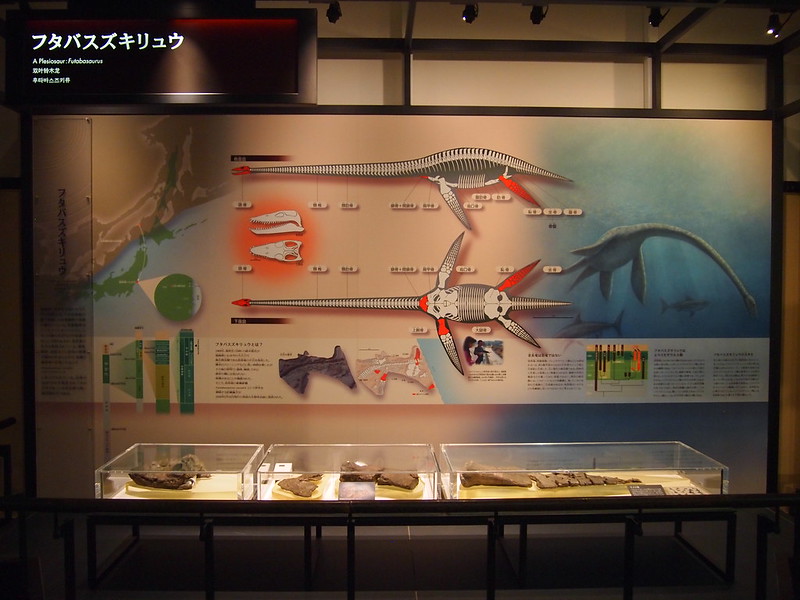
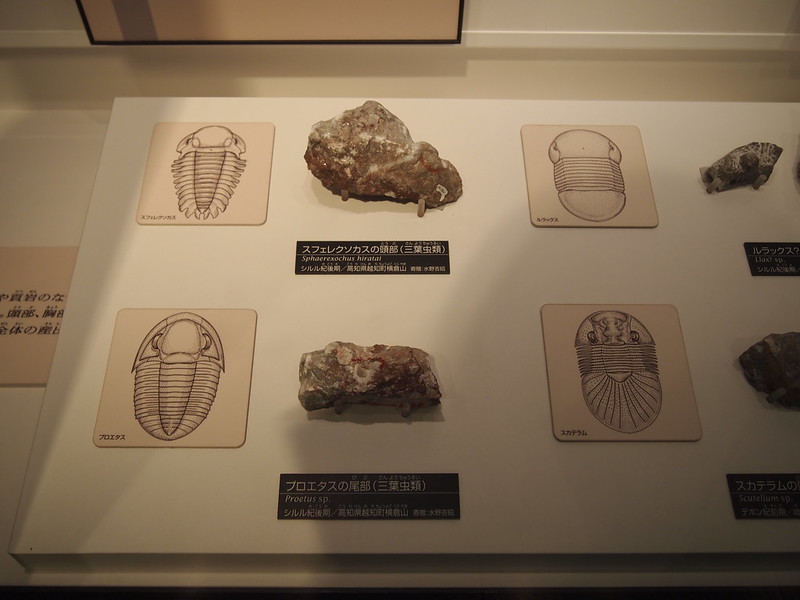
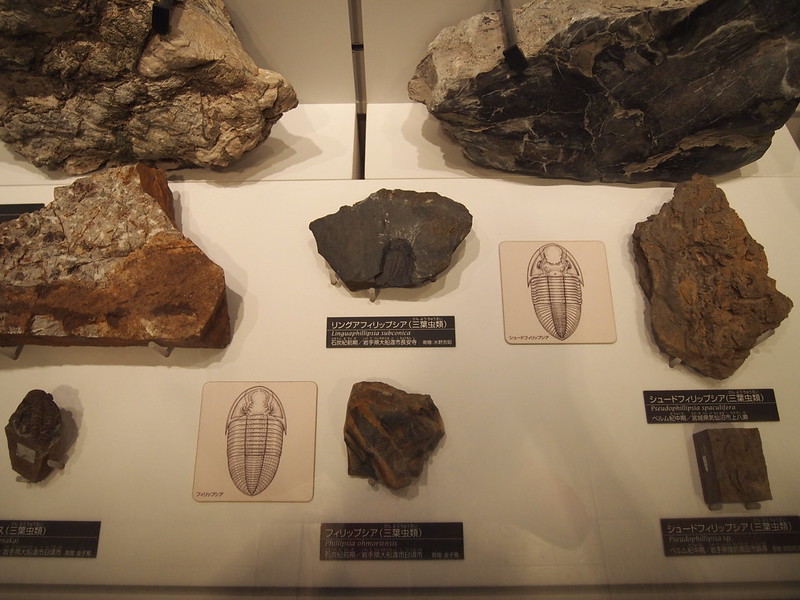
Language-wise: this museum was clearly mainly aimed at Japanese visitors (and children in particular) and has very few english descriptions or translations, but their vast collection is likely to blow most visitors away despite the language barrier. Japanese is a language I would love to learn - I can see there would be so much exciting and interesting material to read in Japanese!
Printed at the back of the English guidebook:
MESSAGE
Blessed with a bountiful natural environment, the people of Japan have lived in step with nature and passage of the seasons, developing a rich culture, beliefs, and world view rooted in the nature that has sustained them. They have also applied their wisdom and ingenuity from time immemorial to improving their lives through exploiting nature, and we the people of present-day Japan, owe our high standard of living to these constant efforts. We would do well to remind ourselves that we are just one point in the history of the Japanese people. We of the present generation should make it our mission to cherish the nature and culture of Japan that has been shaped over so many centuries, and to hand them on in good shape to the next generation.
Although I did not understand Japanese, while walking through this I was struck by a perceived feeling of a stream of passive imbibing of information going on, evidenced by the quiet titterings by young Japanese visitors passing through its halls, like the sounds made by the tiniest little cogs, delicately enmeshed and working together to slowly turn the wheels of a larger and much more complex machine at large.
I spent too long looking at everything else so I didn't have time to go see the Theater 360 until it was all over. Apparently the Theater 360 is a theatre in which visitors stand on a bridge in the middle of a 360 degree screen all around, to give the illusion of "floating". I could be biased (or suffering from some form of art/history museum burnout!), but even for general visitors I would recommend this place over the (considerably drier) Tokyo National Museum which is located across the road - which I also visited.
For a decent trip to this museum, you should give yourself 2 hours or more. Last entry is at 4.30pm. General entry/university students ticket costs ¥620 and it is worth every penny. It is in walking distance from the JR Ueno Station and the cherry blossoms were blooming in Ueno Park when I was there; utterly gorgeous.

